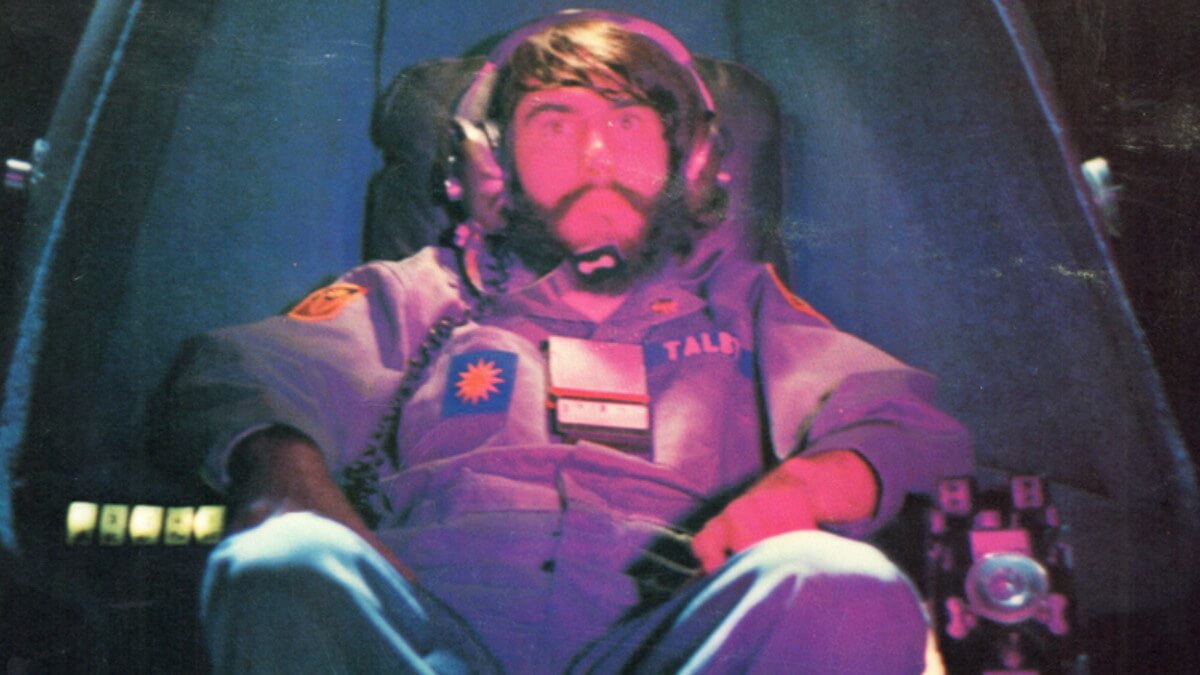Dark Star is an undeniable scifi classic and one of the movies that inspired Alien. In 2024, Dark Star turns 50 and, despite being a movie from the 70s, it still has plenty of things to offer to modern scifi. Mainly, how to do a great movie on a shoestring budget.
Dark Star is John Carpenter’s directorial debut, made by him and Dan O’Bannon as a graduation project for just $60,000. Even accounting for inflation and all that, $60,000 is an insignificant sum even in 1974 for the entire production of a movie – and it shows how you need just talent and a story for a great movie.
BBC paid homage to Dark Star’s anniversary with a fantastic story that explains its place in the greater scifi landscape:
Having just turned 50 years old, it’s a world away from much of the sci-fi that came before it and would come after, neither space odyssey nor space opera, rather a bleak, downbeat and often absurd portrait of a group of people cooped together in a malfunctioning interstellar tin can. Arguably its most famous scene consists of an existential debate between an astronaut and a sentient bomb. Dark Star was a collaboration between Carpenter, who directed and scored the film, and Dan O’Bannon, who in addition to co-writing the script, acted as editor, production designer, and visual effects supervisor, as well as playing the volatile, paranoid Sergeant Pinback. They met as budding filmmakers at the University of Southern California. “While [Carpenter and O’Bannon] couldn’t be more dissimilar in personality, they were both very energetic and focused,” says Daniel Griffiths, director of Let There Be Light: The Odyssey of Dark Star (2010), the definitive documentary about the making of the film.
The sci-fi films of this period tended to be bleak and dystopian, explains John Kenneth Muir, author of The Films of John Carpenter — films like Silent Running (1972), in which all plant life on Earth is extinct, or George Lucas’s 1971 debut THX-1138, in which human emotion is suppressed. “Dark Star arrived in this world of dark, hopeless imaginings, but took the darkness one step further into absurd nihilism.” Carpenter and O’Bannon set out to make the “ultimate riff on Stanley Kubrick’s 2001: A Space Odyssey,” says Griffiths. While Kubrick’s 1968 film, explains Muir, was one “in which viewers sought meaning in the stars about the nature of humanity, there is no meaning to life in Dark Star”. Rather, says Muir, it parodies 2001 “with its own sense of man’s irrelevance in the scheme of things”. Where Kubrick scored his film with classical music, Dark Star opens with a country song, Benson, Arizona. (A road in the real-life Benson is named in honor of the film). The film was even released with the tagline “the spaced-out odyssey.” Dark Star captured the mood of the time in which it was made, says Muir, the atmosphere of Nixon’s America. “The 1960s was all about utopian dreaming and bringing change to America in the counterculture. The 1970s represent what writer Johnny Byrne called ‘The wake-up from the hippie dream’, a reckoning with the fact that the more things change, the more they stay the same.” […]
Like other cult classic scifi movies, Dark Star was met with a mixed reception at launch. Even for its tiny budget, the movie was a disappointment for Carpenter and O’Bannon though.
Griffiths says “both Carpenter and O’Bannon realized that all the struggles they endured to make the film did not matter to audiences, they only cared about the finished product. I think they were discouraged.”
Fortunately for the aspiring filmmakers, the movie was successful on VHS and paved the way to greater things.
O’Bannon went on to write the script for Ridley Scott’s Alien, which has a lot in common with Dark Star, and Carpenter, of course, gave us The Thing, among other gems.
Also read: Gwyn de Vere In Matrix 4: Can The New Matrix Resurrections Cast Become As Iconic?
Follow TechTheLead on Google News to get the news first.



















